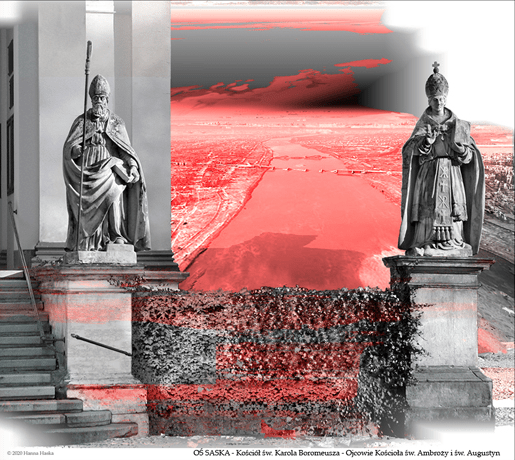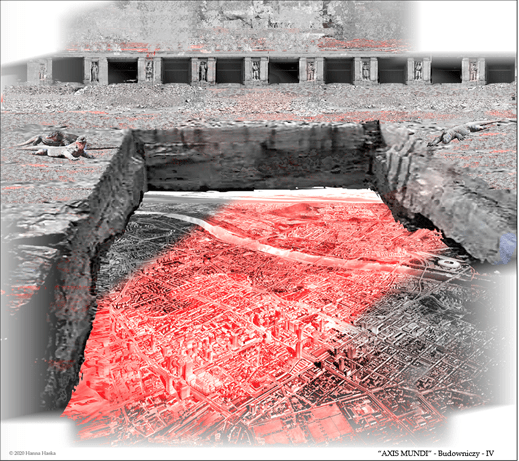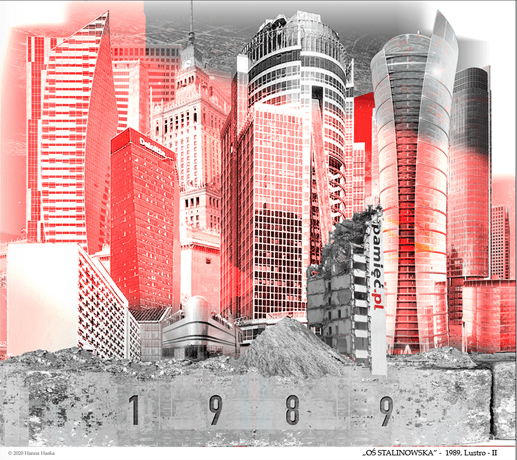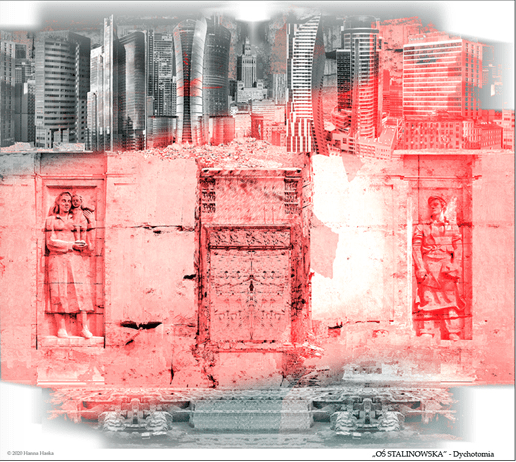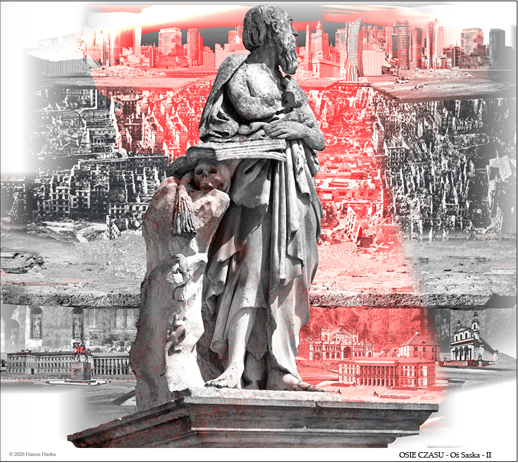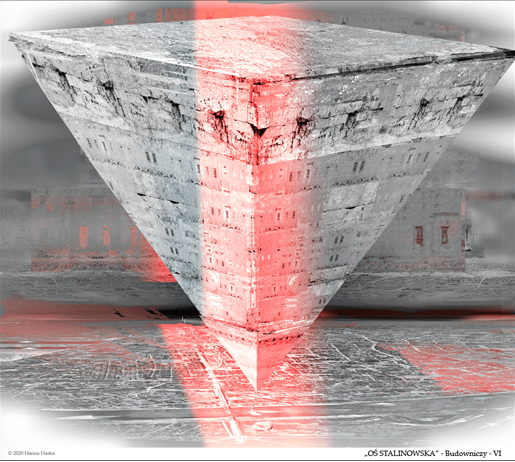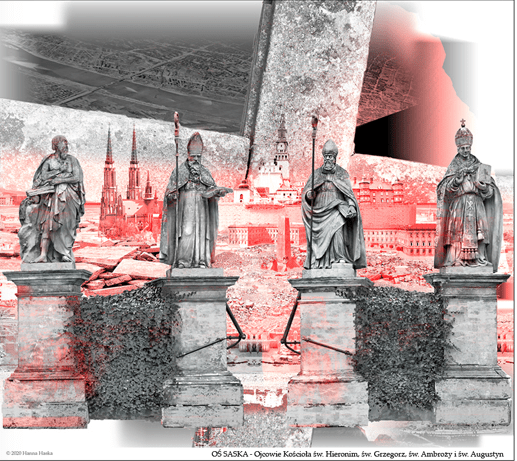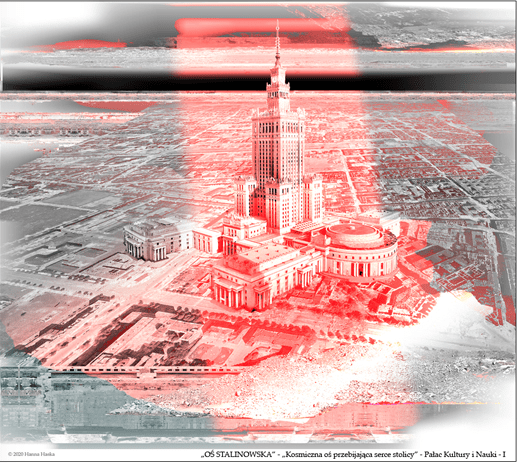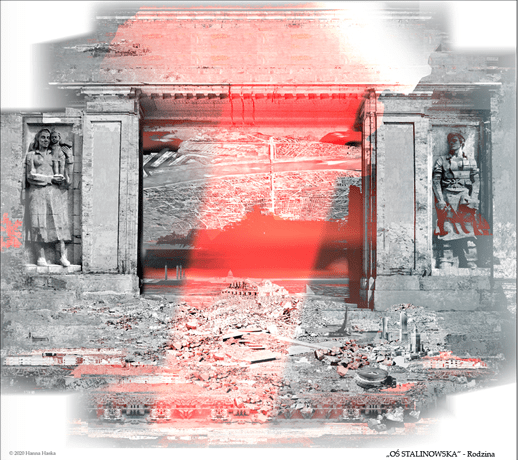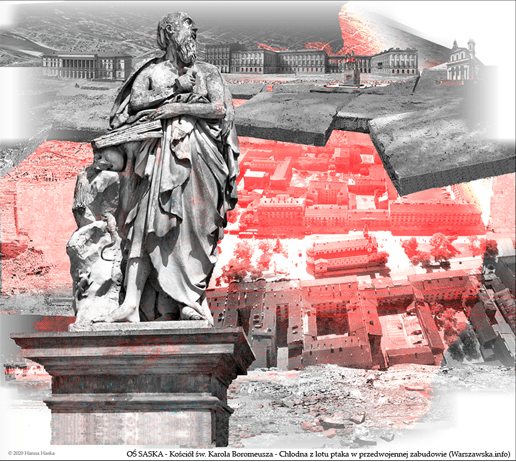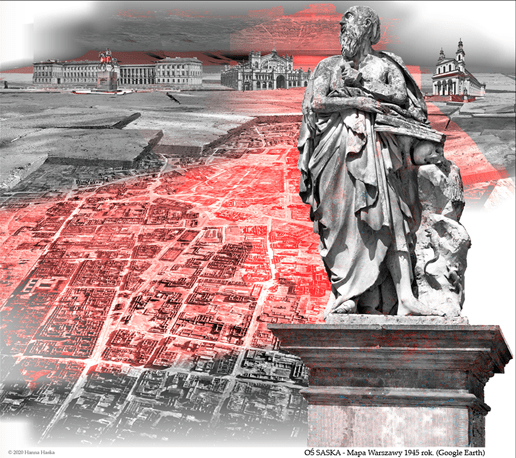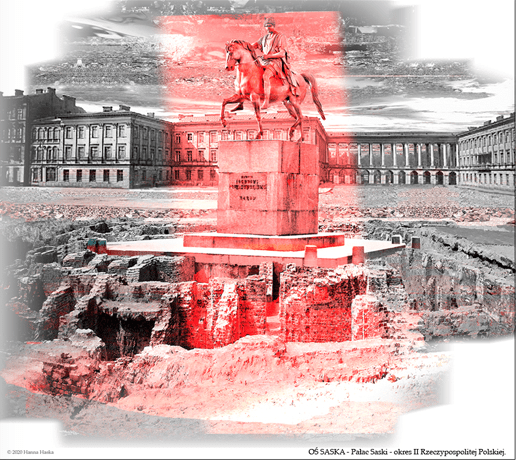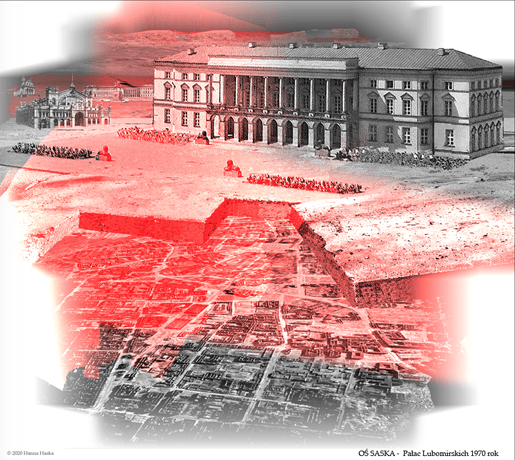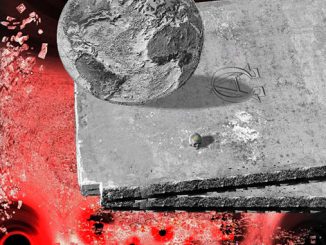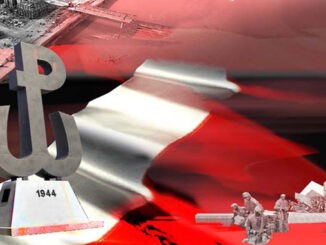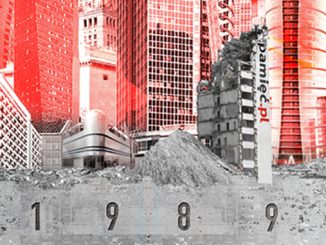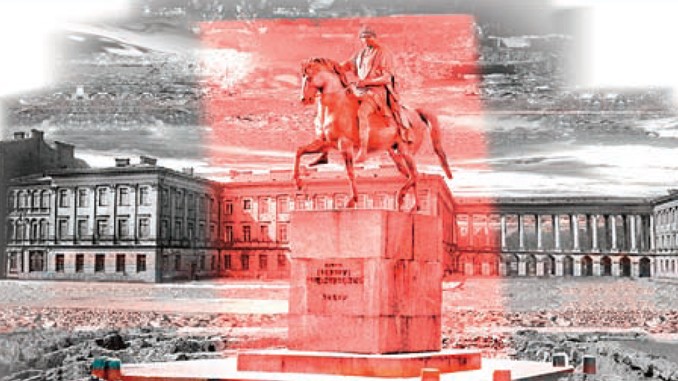
City’s Engrams – Paths of Remembrance.
on the 76th Anniversary of the Warsaw Uprising
I was born on the largest rubble of post-war Europe – the ruins of Warsaw razed to the ground
by the Germans after the Warsaw Uprising of 1944. Over 85% of the city was in ruins. The postwar ruins were my childhood playground. Over time, these games turned out to be my unconventional history lessons. With my bare hands, I was touching the exposed foundations of the 19th and 20th century city. During the games, I had an irresistible feeling – as if I was in a huge cemetery.
There, underneath, I saw a completely different city. I was thinking, that it is only a product of
the trauma of my childhood imagination. In the frenzy of the 1950s, the hasty reconstruction
and the introduction of a new social order, there was no room for the continuation of the values which the city and its inhabitants were before the extermination. Their unique culture remained absent.
I missed that presence … The graphics are my visual reflections; my own struggles with time,
with the progressive deconstruction of my City, my attempt to regain it’s unique space …
I am presenting graphics from another portfolio dedicated to my hometown of Warsaw –
the history of the City in the course of it’s dramatic transformations at the turn of the 19th and 21st centuries. 2020 is already the 76th Anniversary of The Warsaw Uprising 1944. It is accompanied by the second, obligatory anniversary – The 100th Anniversary of Poland Regaining Independence.
I am a Varsovian over through many generations. In the interwar period, my family lived in Warsaw at Freta street (New TownSquare). My great-grandfather was the Piłsudski Legionary, then a policeman in the New Town (1920-1939). He was murdered in Tver in 1940. My grandfather took part in the war of 1920, than he was active in the Conspiracy (1939-43). During the occupation, most of the family was involved in the Resistance Movement against the German occupier in Warsaw. My uncles were members of the Home Army. In January 1942, my mother and her sister joined the Ranks of the 39th Praga Team of Scouting named after Emilia Plater. A year later, “Szare Szeregi” were subordinated to the Command of the Home Army. In August 1944, my mother fought in The Warsaw Uprising as a liaison and a nurse. From Freta, in September 1944, she was taken with her mother to the German concentration camp Ravensbrück. The young people from my family belonged to the musically talented youth from Warsaw.
Most of these youth fought in The Warsaw Uprising; they were killed, and more than once remains under the rubble until today – just like my mother’s fiancé (…).
The Providence, in the early 1950s, placed me on the ruins of post-uprising Warsaw – in the very center of the city. I was born where the Ghetto was located during the German occupation (Muranów). Than I lived at the historic Saska Axis; on the Mirów II district, at Elektoralna str., next to the Mirowskie Barracks and the Church of St. Charles Borromeo. There was a sea of rubble around me. I witnessed the reconstruction of Warsaw. First, I watched as a new socialist-realist infrastructure was built on the foundations of a 19th-century city: solid quadrilaterals of Stalin’s Muranów and Mirów housing estates, with extensive facilities: nurseries, kindergartens, schools and clinics. My representative “contemporary” was erected (1952-55) in the immediate vicinity – The Palace of Culture and Science named after Joseph Stalin, “the gift of the nation Soviet for the Polish nation ”, designed by the Soviet architect Lew Rudniew, who was inspired by Moscow skyscrapers – after American’s art déco skyscrapers. The palace is an architectural mixture of socialist realism with elements of Polish historicism. Together with the spire, reaches 237 meters. The palace greeted me every day from the windows of my family’s M2.
At the turn of the 2nd and 3rd millennium, after the systemic change in the country, I watched as the nearest district absorbs the remains of rubbles, including the 19th century „ostańce”, and transforms into the corporate “Warsaw’s Manhattan”. High-rise buildings were erected – headquarters of corporations and banks, this time without social facilities. Along the neglected national, historic architecture of the Saxon Axis, with its never-rebuilt base, i.e. the Saski Palace, a new axis grows from the east to the west – the continuation of the “Stalinist Axis – the cosmic axis piercing the heart of the capital” delineated by the 10th Anniversary Stadium and the Palace of Culture and Science. There is a growing axis of corporate giants with no Polish references or even Polish names.
The axis of global architectural universalisms, or direct representatives of foreign cultures. Today, in the 20s of the 21st century, this axis is expanding more and more to the west, finalizing new positions: 41 buildings (237-60 m) completed, 18 buildings (310 – 60 m) under construction, 10 skyscrapers approved for construction and 22 waiting for approval. For 60 years I have been taking photos of the surrounding architecture. These archival references were the basis for my cultural and identity research, and became the groundwork for creating my own, artistic space. Unfortunately, no remnants from my mother’s house survived The Uprising. They were destroyed along with the entire tenement house – also the entire Old Town. I tried to recover from family senior members their stories – direct testimonies of the events of the interwar period and the occupation period in Warsaw.
Every scrap the City’s space was paid off with the suffering of loved ones and became my painful engram…
Hanna Haska
Bio Note
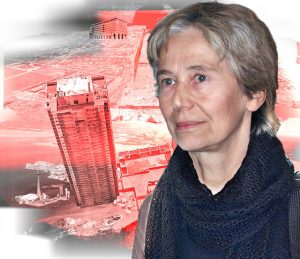 She graduated from the Academy of Fine Arts in Warsaw. 1976 diploma in the poster studio of prof. Henryk Tomaszewski. She studied academic graphics (lithography and serigraphy) and applied graphics design. Than she continued her education: Macintosh in Design at The Kansas City Art Institute, USA, and Multimedia at The Digital Media Studio by the University of Toronto, Canada. She learned digital media; desktop publishing and multimedia. She designs graphics for American and Canadian printing companies (1990 – 2002). Was combining experience of fine artistic graphics with applied digital graphics. After 2002, she focused on artistic graphics. She developed her original art style with an emphasis on archival architectural references and digital photo processing.
She graduated from the Academy of Fine Arts in Warsaw. 1976 diploma in the poster studio of prof. Henryk Tomaszewski. She studied academic graphics (lithography and serigraphy) and applied graphics design. Than she continued her education: Macintosh in Design at The Kansas City Art Institute, USA, and Multimedia at The Digital Media Studio by the University of Toronto, Canada. She learned digital media; desktop publishing and multimedia. She designs graphics for American and Canadian printing companies (1990 – 2002). Was combining experience of fine artistic graphics with applied digital graphics. After 2002, she focused on artistic graphics. She developed her original art style with an emphasis on archival architectural references and digital photo processing.
Architecture is an amazing metaphor for me; it is the most enduring form of art where the thoughts of the builders for many hundreds of years are still available to careful observer. Architectural references are the sources of my inspiration. I prepare and collect my own photographic documentation.
These archival references are the basis for my cultural and identity research, and became the groundwork for creating my own, artistic space. Logic, nor rationalism, do not organize this space. Rather metaphysics. Reaching for references; directly or indirectly, I am trying to authenticate discovered metaphysics. She creates portfolios of graphics devoted to the foundations of European culture; Archive of Places and Mystical Journeys. The main inspiration is her hometown – Warsaw during it’s dramatic transformations at the turn of the 19th and 21st centuries. She dedicates further (autobiographical threads) portfolios of graphics to Warsaw: Resurrected City gives birth to Immortals, City of Remembrance, Singing of Walls, Archives of places, Deposit, Unbreakables – Great Absentees, Warsaw’s Cemetery, August 2, 1944, The Independent, Unbreakables – Centennial, City’s Engrams.
.

